By Anna Betz for Enlivening Edge Magazine
Part 2 of this article is here.
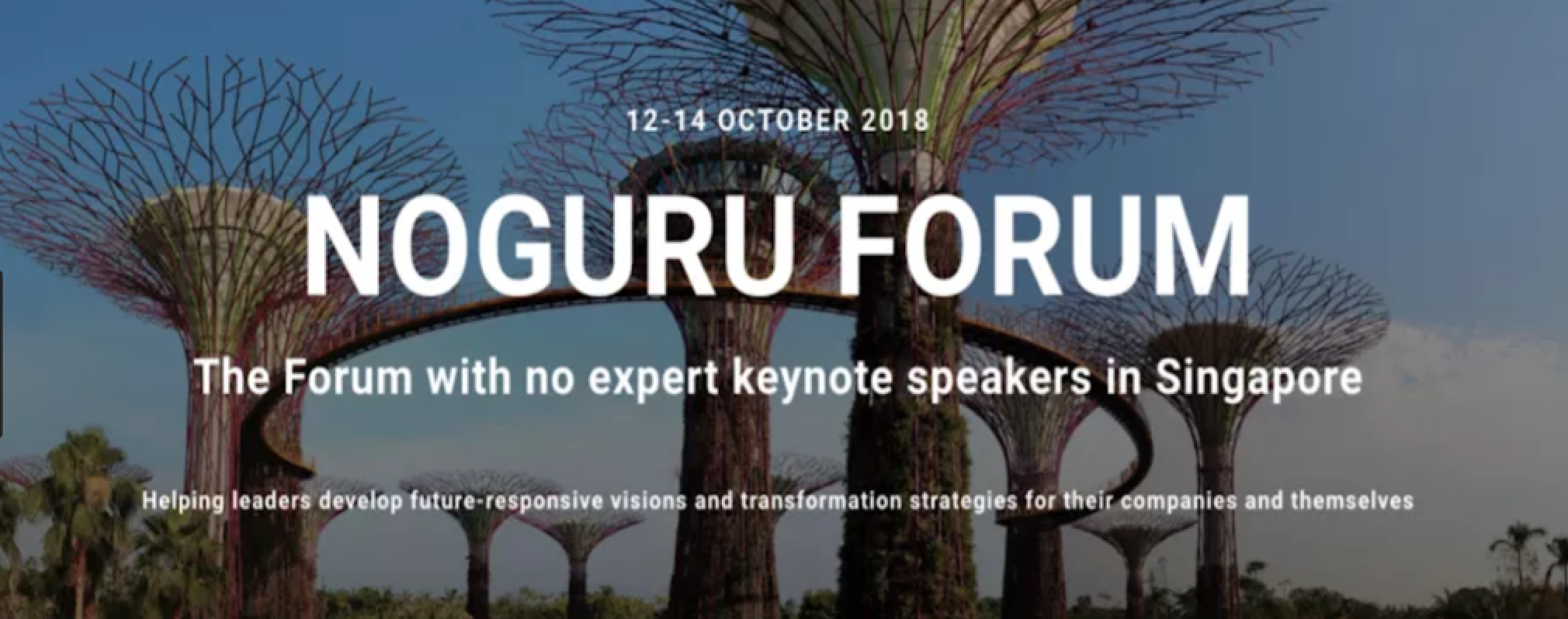
The NoGuru Forum (1) (Singapore, 12-14 Oct, 2018) was a unique gathering of organizational leaders from different countries and cultures to meet and engage in deep personal and organizational inquiries, during a 3-day transformational journey.
Supported by the Matrix Leadership methodology (2), NoGuru circles self-organized on the first day and became the nurturing and generative environment for deep listening, transparency, deep dialogue, transformation and synergy. When the world is changing faster than any one individual leader can make sense of it for themselves or their organization, such skills and competencies are essential to develop future-responsive visions and transformation strategies.
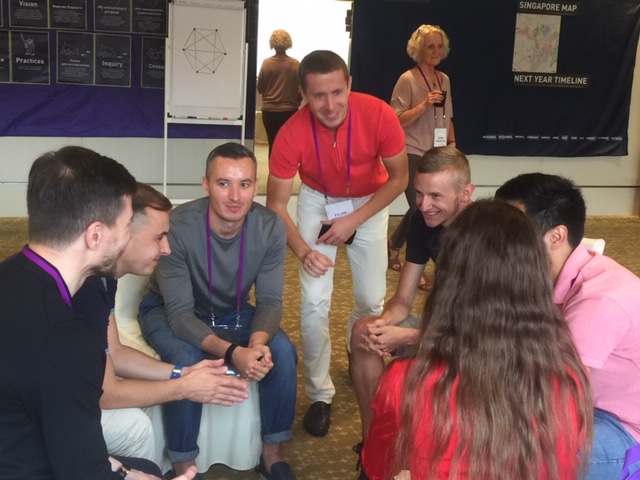
During each day of the Forum, participants had the opportunity to go on individual and paired vision walks in the best natural and cultural locations in Singapore. These 3 days felt as close as I could imagine to an event that enables everyone to become ever more transparent, enlivened, co-creative, and soulful and also to behave as integral parts of an evolving living organism.
Increasing our capacity to absorb complexity: an evolutionary competence
George Pór, a member of this gathering’s Wisdom Council, invited us to visualize the transformational initiatives around the world as an ecosystem where each one is represented by a node connected to other nodes.
“For the sake of greater impact, every initiative needs to increase its capacity to cultivate meaningful, co-creative connections with other nodes. That depends on relational competencies, good maps of the web of our connections, and the alignment of our team or circle.
“If one person can hold and cultivate 15 or up to 20 meaningful, co-productive relationships, then a well-aligned team would have the multiples of that number, with huge implications for their collective transformative power.”
It might take years of development to achieve that, but that’s what it will take to make a difference for the world and with a higher impact. Being a node in the ecosystem of transformational initiatives is the key capacity George himself embodies and helps others to cultivate so beautifully. Not surprisingly he has been called “the most connected person in the world.”
He said, “How much life energy a team is able to channel into the cultivation of its relationships is the measure of how real and significant their contribution is to evolution, to life itself. Helping to build strong teams with complexity-absorbing capacity many times bigger than that of anyone single individual, is one of the arts of organizing that Community Intelligence (3) is cultivating.”
Trends and why we need to watch them
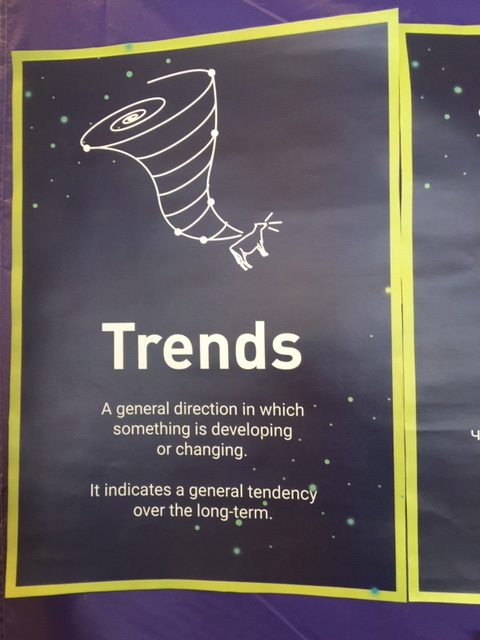
When knowledge is expanding much faster than we can make sense of what on Earth is happening, the global “we” knows more and more while we as individuals and even as organizations know a smaller and smaller portion of what’s worth knowing.
In the routine of our daily work we don’t think of the general direction and pace with which the future is unfolding, whether it’s the future of organizations, of technology, or the world of business.
Even if we don’t think about the direction that influential trends point towards, it doesn’t mean that those trends aren’t affecting us, thinking about us, and sometimes thinking for us.
Our best bet to read the signs of “weather” conditions affecting the winds of change correctly is to turn towards each other and listen to the collective intelligence of our various communities of practice.
Ecosystem of trends
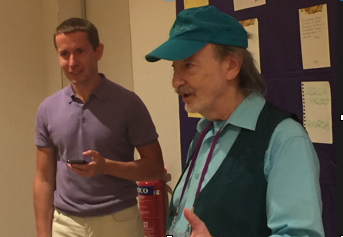 We can distinguish among kinds of trends. There are evolutionary trends, the ones aligned with the direction of evolution. There are other kinds of trends more like fashions and fads that come and go. When we pay attention to the interacting relationships of various evolutionary trends and align our strategies with them, we allow the wind of evolution to blow into our sails.
We can distinguish among kinds of trends. There are evolutionary trends, the ones aligned with the direction of evolution. There are other kinds of trends more like fashions and fads that come and go. When we pay attention to the interacting relationships of various evolutionary trends and align our strategies with them, we allow the wind of evolution to blow into our sails.
When creating a vision for the future of business, being informed by the ecosystem of evolutionary trends is crucial.
To deepen our understanding of their interdependence and the multiple effects on business models, strategies, structures, and cultures, George introduced us to the transformative power of collective intelligence.
There are business think tanks, futurists, forecasters, trend-spotters and other professional “crystal ball”-gazers, who do their best to predict the shape of things to come.
But their best is rarely as good as the insights of those who have realized that the best way to predict the future is to co-create it.
Hence the pivotal role of organizational change-makers and their collective intelligence (CI) in identifying and taking into account global technological and socio-economic trends.
Leaving them out from the equations with which we try to respond to the future would lead to unpleasant surprises.
CI is growing, thanks to the power of connecting to our personal wisdom and intuition, as well as to the power that emerges from the in-between space of individuals, groups, and organizations. It is not the intelligence of one plus one plus one and adding all the others. That’s known as additional or aggregate collective intelligence.
The CI worth boosting is the “emergent collective intelligence,” as Lia Aurami calls it. It is a deliberative intelligence arising from our connections, from our conversations, what each of us cares about, what the common things are that connect us, rather than what only increases our individual smartness and the sum of that.
To make wise decisions about what we want to use technology for, we need to learn how to augment our emergent CI.
The kind of connective conversations that create CI started happening at the NoGuru Forum on the 1st day. It didn’t mean just talking about CI. We experimented with it, played with it, and enjoyed it.

to be seen as an objective absolute list of trends.
Participants were invited to take a closer look at the trends, while they were also listening to their own sense-making and to what was resonating with them. They were encouraged to accept and understand that these were not the only trends. There might be others, including some they could discover themselves.
It was important to notice one’s own reactions while reading them. Notice which felt more resonant and more important than others. Ask oneself why this was so, and share observations in pairs and small groups.
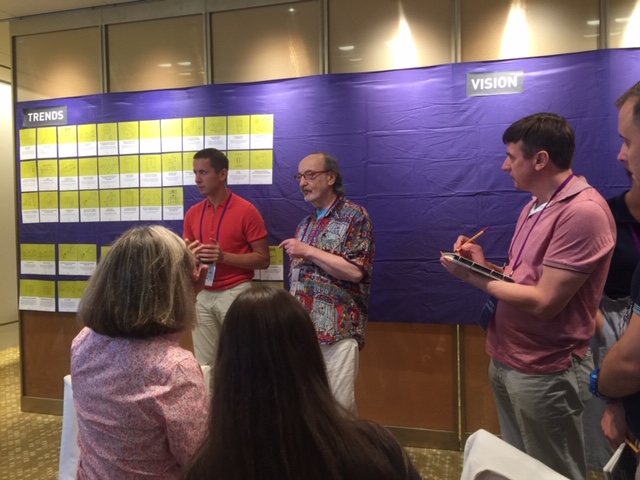
Exploring the trends that affect their organization’s future, during the forum, enabled participants to discuss what kind of robust strategies they should develop, that will perform well in a great variety of circumstances.
The forum also provided a unique opportunity for leaders to learn about themselves, each other, and how collective intelligence grows and solutions emerge when conversations connect.
In Part 2 of my report, Collective Intelligence is the New Guru: Powerful Questions for Discovering Evolutionary Purpose, you will learn about another area of the NoGuru Forum conversations, through which we grew a more intimate relationship with Evolutionary Purpose.
References
http://matrixleadership.org/model/
http://community-intelligence.com
 Anna’s background is in Health and Social Care with training in Herbal Medicine, Socialwork, Mindfulness Practice, Transparent Communication, and Systemic Family Therapy.
Anna’s background is in Health and Social Care with training in Herbal Medicine, Socialwork, Mindfulness Practice, Transparent Communication, and Systemic Family Therapy.
She practices a pro-active evolutionary approach to Health and Wellbeing and leads on projects in the UK National Health Service using Mindfulness and diet for people suffering from chronic inflammatory diseases like diabetes and dementia.
Her passion for building thriving and sustainable communities inspired her to co-found the HealthCommonsHub. She feels at home in places where individual, communal, organisational, and social evolution meet, and where people support each other in becoming whole and feel enlivened.
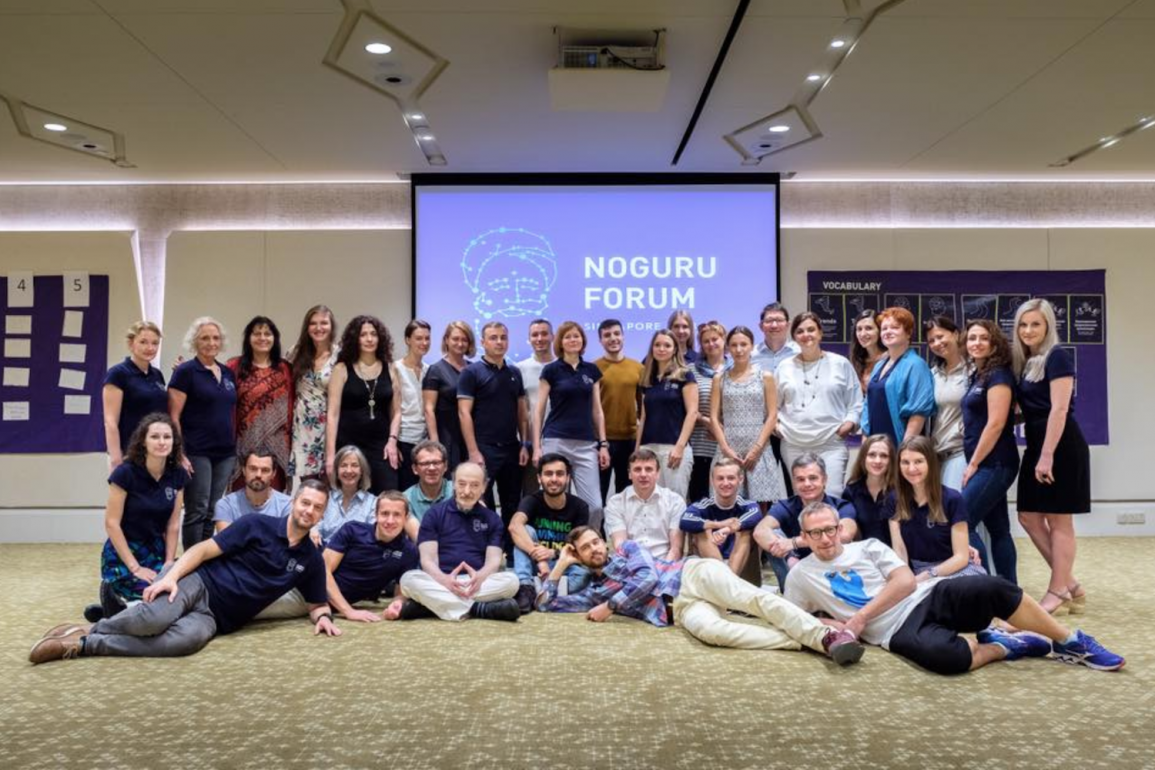


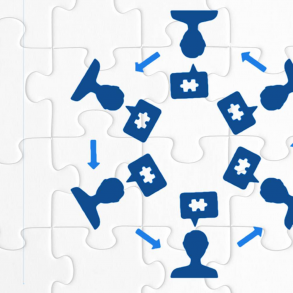

hi Anna, could you share a link to the trends shown here? Thanks, sue
Hi Sue,
Unfortunately I cant attach images to a reply.
here is a collection of our original 10 trends we identified:
1.
Intergenerational Learning
Definition
People of different ages learn and work together to gain skills and knowledge, in ways that complement the cognitive strengths, life experience and perspectives of their age group.
Questions for further inquiry
How to stimulate the curiosity of older workers what they can learn from the younger ones?
How to encourage younger workers to seek advice from older ones to navigate complex systems, without giving up their own point of view about it?
2.
Exponential Technologies
Definition
These technologies tend to double in capability or performance while get their cost reduced in each subsequent period. For computers, this period is two years. That makes it possible to incorporate them into solving many of today’s business problems in ways that were not previously possible.
Examples
Computers (doubling every 18 months or so (Moore’s Law). Others: 3D printing, drones, robotics, artificial intelligence, blockchain, synthetic biology, etc.
Opportunities
Forward-thinking organizations are also encountering opportunities to look beyond the purely commercial implications of exponentials. The same forces driving innovation and growth in the commercial sector can also drive transformational change on a social level. Humanity’s grandest challenges in education, health care, climate change, and even civil rights can all be viewed through a different lens as disruptive technologies energize creative problem-solving.
Source: https://www2.deloitte.com/insights/us/en/focus/tech-trends/2016/social-impact-of-exponential-technologies.html
Questions for further inquiry
What responsibility do companies have to expand their reach beyond their own walls, and to help leverage exponentials to drive greater good in society? Moreover, how will business and society address the ethical and moral questions around unequal access to new innovations and, more broadly, how these new innovations will be used?
Source: https://www2.deloitte.com/insights/us/en/focus/tech-trends/2016/social-impact-of-exponential-technologies.html
3.
Digitalization of Business
Definition
Digital transformation refers to the continuous change of more and more of the business processes to digitally enhanced processes, based on a sophisticated IT infrastructure, digital applications and networked systems and data… Automation, optimization, autonomy of processes as well as more flexibility and individuality of products and services are just some of the benefits and opportunities of digitalization. The process also leads to innovative business models and digital products.
The existing business model is digitally mapped and/or new digital products are developed. Information, communications, processes and services are networked via digital platforms.
Digital transformation leads the fusion of online and offline, disruptive technologies and the radical change of entire industries. The most common drivers of progress are increased customer expectations and competition in the market.
Source: https://www.aoe.com/en/digitalization.html#c24842
4.
Platform Revolution
Definition
A platform is a business model that creates value by facilitating exchanges between two or more interdependent groups, usually consumers and producers. The platform provides an open, participative infrastructure for these exchanges and sets governance conditions for them.
The platform’s overarching purpose: to consummate matches among users and facilitate the exchange of goods, services, or social currency, thereby enabling value creation for all participants.
Self-Organization
Definition
The term “self-organization, frequently used as synonymous to “self-management,” refers to “a process where some form of overall order or coordination arises out of the local interactions between smaller component parts. Source: Wikipedia
Definition
When making the employees development one of the top priorities of the organization and the leaders are convicted that they it will thrive only if every one of its employees does, we call it Deliberately Developmental Organization (DDO).
5.
Gig Economy
Definition
The gig economy is a labour market characterised by the prevalence of short-term contracts or freelance work, as opposed to permanent jobs. Instead of a regular wage, workers get paid for the “gigs” they do as freelancers. people can benefit from flexible hours, with control over how much time they can work as they juggle other priorities in their lives. The flexible nature often offers benefits to employers, as they only pay when the work is available, and don’t incur staff costs when the demand is not there.
6.
Business with Meaning
Definition
Conducting business with meaning refers to a significance and purpose beyond merely generating financial rewards for the owners and employees.
When the larger meaning of a goal is valued and firmly understood, all involved can derive a feeling of satisfaction that what they are doing is worth their effort.
Opportunities
Connecting to an underlying humanity
Encouraging individual and collective excellence
Dangers
7.
Glocalization
Definition
Glocalization is the practice of conducting business according to both local and global considerations. Or in a broader sense, “the simultaneous occurrence of both universalizing and particularizing tendencies in contemporary social, political, and economic systems.” Source: Encyclopedia Britannica.
8.
Decentralization
Definition
Decentralization is the process by which the activities of an organization, particularly those regarding planning and decision-making, are distributed or delegated away from a central, authoritative location or group. (Merriam-Webster Dictionary)
9.
Culture of Collaboration & Trust
Definition
Collaborative culture as one that values teamwork, communication, respect and empowerment, and leverages the knowledge of individuals resulting in organizational learning. Trust is, “the state of readiness for unguarded interaction with someone or something.” Trust fosters a collaborative culture that enhances the creativity of people and teams.
Examples
Internal trust, between employees and managers, and top-level managementtrust Trust between your organization and your customers
Slow trust
Swift trust
10.
Transformative Innovation
Definition
Sustaining innovation improves efficiency and prolongs the life of existing systems. Disruptive innovation shakes things up or subverts those systems. With a longer term aspiration it is possible to disrupt with a purpose. That is the practice of Transformative innovation, shifting the whole system over time to a new viable pattern, fit for the future. Source: http://www.iffpraxis.com/transformative-innovation
Definition
Collaborative culture as one that values teamwork, communication, respect and empowerment, and leverages the knowledge of individuals resulting in organizational learning. Trust is, “the state of readiness for unguarded interaction with someone or something.” Trust fosters a collaborative culture that enhances the creativity of people and teams.
Examples
Internal trust, between employees and managers, and top-level managementtrust Trust between your organization and your customersSource: Platform Revolution: How Networked Markets Are Transforming the Economy–and How to Make Them Work for You